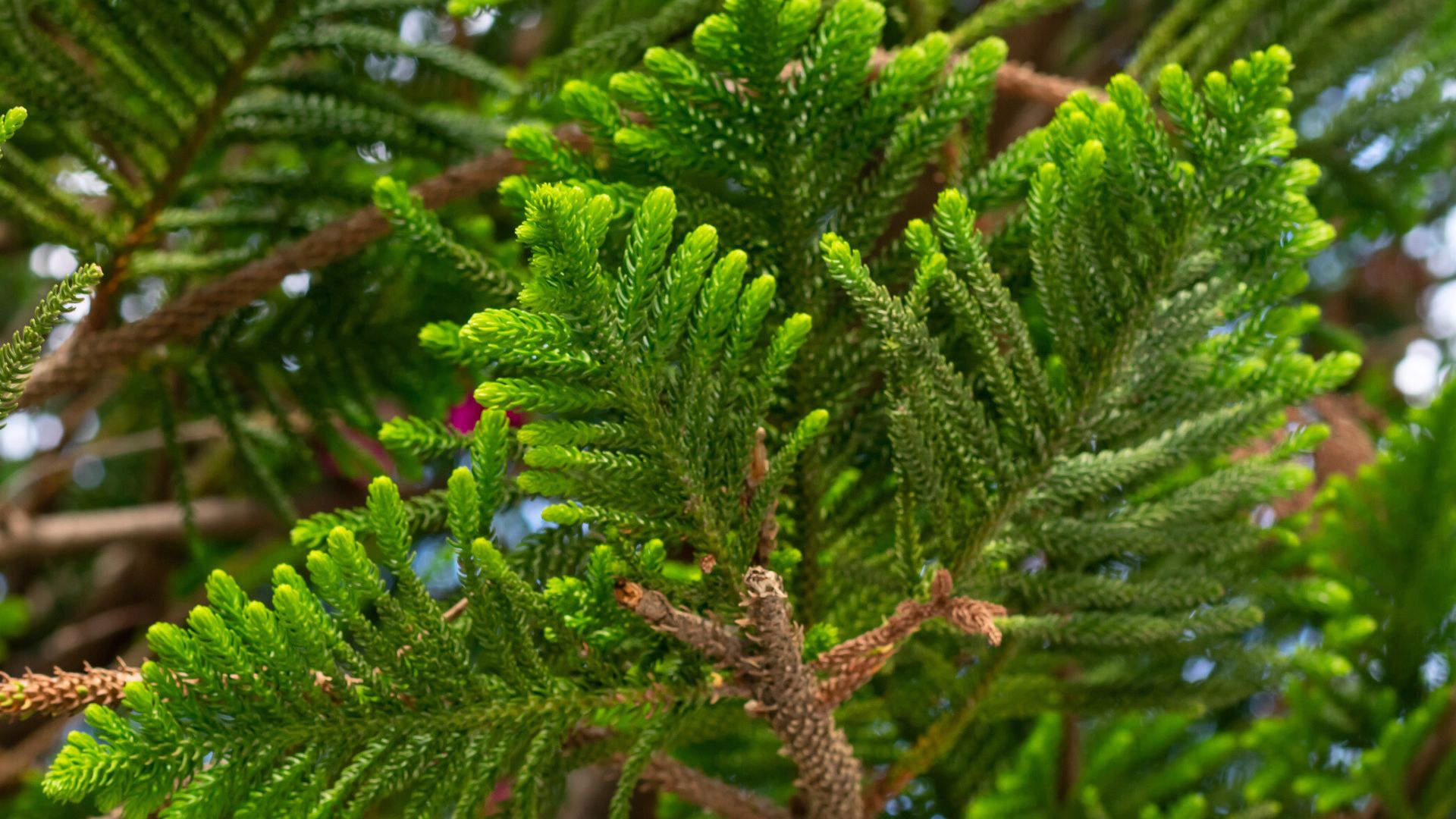Top 10 Questions About Norfolk Island Pine Trees


Christmas is the big season for Norfolk Island pines, those cute little houseplants that look like small potted pine trees, with beautiful, scaly branches and scale-like leaves. But these plants make first rate container plants all year long. Here at Gardening Know How we get lots of questions about these trees, and we want to share our knowledge with you. The following information includes the 10 most commonly asked questions about Norfolk Island pines as well as our responses.
1. Why is my Norfolk Island pine dropping its branches? Norfolk Island pine trees regularly lose lower branches or branch tips as they grow, but if you see widespread damage on your plant, you probably need to rethink your cultural practices. Correcting issues like water, humidity and fertilizer will probably take care of the situation. Norfolk Island pines should only be watered when the top inch of soil feels dry. When this happens, water it generously. The plants also need a high level (about 50 percent) relative humidity. You can increase humidity by putting a basin of water filled with pebbles below your plant.
2. Can I plant my Norfolk pine outdoors? If you live in an area with chilly winters, you'll have to think of your little pine-like plant as a houseplant. While Norfolk Island pine trees can tolerate temperatures just below freezing, anything colder may kill them. They adjust well to life indoors.
3. Can I prune a Norfolk pine? Does a Norfolk Island pine need pruning? While you can snip off damaged or dying branches, don't consider topping a Norfolk pine. It will never regain the same shape afterwards. Limit the size of the tree by restricting its pot size and possibly root pruning it.
4. Why are branches curling up on Norfolk pine? Curling lower branches is par for the course on Norfolk pines, so don't worry about it. If it's upper branches that are curling, suspect either dry soil or spider mites. Check for mites by spraying water on the branches. It will allow you to see the webbing. You can get rid of mites by mixing a little liquid dish soap in a spray bottle of water and spraying the plant thoroughly every week for a month.
5. What causes yellow tips on Norfolk pine? Too much water or too little water can cause yellow tips on your plant. Check the drainage holes in the container to make sure the Norfolk pine isn't sitting with "wet feet." Too little water or humidity can also cause the foliage to turn yellow and then brown. Mist your plant with cool water daily to raise the humidity level. Be sure to check the soil regularly and water generously when the top inch is dry.
6. What type of soil for a Norfolk Island pine? Norfolk Island pine isn't picky about soil and accepts either acidic or alkaline. You can use a mix of potting soil, peat and sand. Excellent drainage is of top importance. You can fertilize your Norfolk pine in the spring and summer with a water soluble balanced fertilizer, but you do not need to fertilize in the fall or winter.
Sign up for the Gardening Know How newsletter today and receive a free copy of our e-book "How to Grow Delicious Tomatoes".
7. Why is my Norfolk pine turning brown and drying out? This is a rather common problem with these little trees. They require a higher humidity level than is normally found in a house to stay green and healthy. Place the tree on a saucer with water and pebbles to increase humidity. If necessary, bring in a humidifier.
8. How can I start new plants from Norfolk pines? Propagate your little tree by rooting soft cuttings. Cut a tender shoot that is a little longer than your palm, remove the lower leaves, then dip the cut end in rooting compound. Stick the cuttings in a container filled with moist potting mix. Cover it with a light plastic bag and leave it in indirect sunlight, keeping the soil moist. Check for rooting after a couple weeks by gently pulling on the stem. If you feel resistance, remove the plastic covering.
9. How to repot a Norfolk Island pine? When you repot, don't make a huge change in container size. Only go up another couple inches in pot size and pick a pot with adequate drainage holes.
10. How to care for a Norfolk Island pine indoors? The two most important things to remember when you have a Norfolk Island pine as a houseplant are hardiness and humidity needs. These plants will die outside if the weather drops below freezing. And they will only remain lush and green if they have adequate (50 percent) relative humidity.
We all have questions now and then, whether long-time gardeners or those just starting out. So if you have a gardening question, get a gardening answer. We're always here to help.

Teo Spengler is a master gardener and a docent at the San Francisco Botanical Garden, where she hosts public tours. She has studied horticulture and written about nature, trees, plants, and gardening for more than two decades, following a career as an attorney and legal writer. Her extended family includes some 30 houseplants and hundreds of outdoor plants, including 250 trees, which are her main passion. Spengler currently splits her life between San Francisco and the French Basque Country, though she was raised in Alaska, giving her experience of gardening in a range of climates.